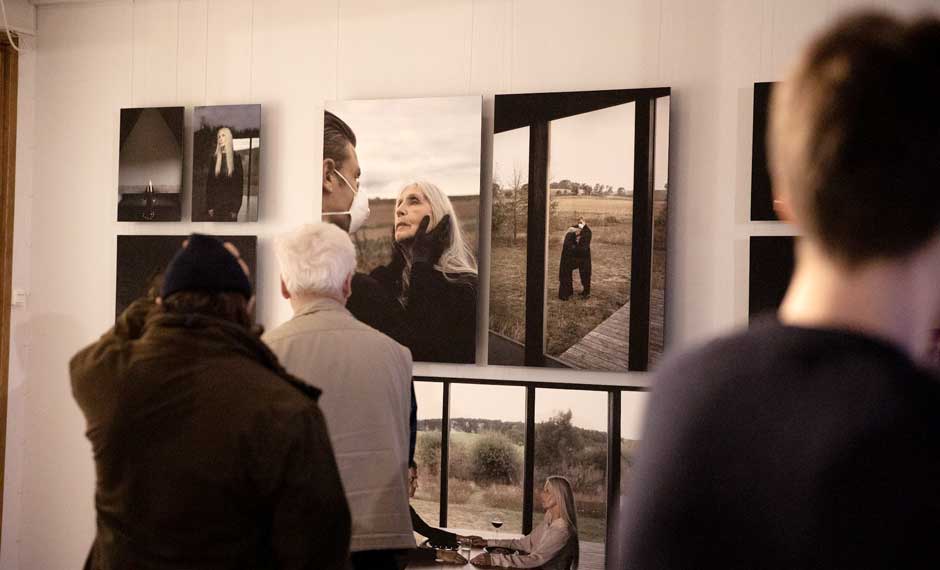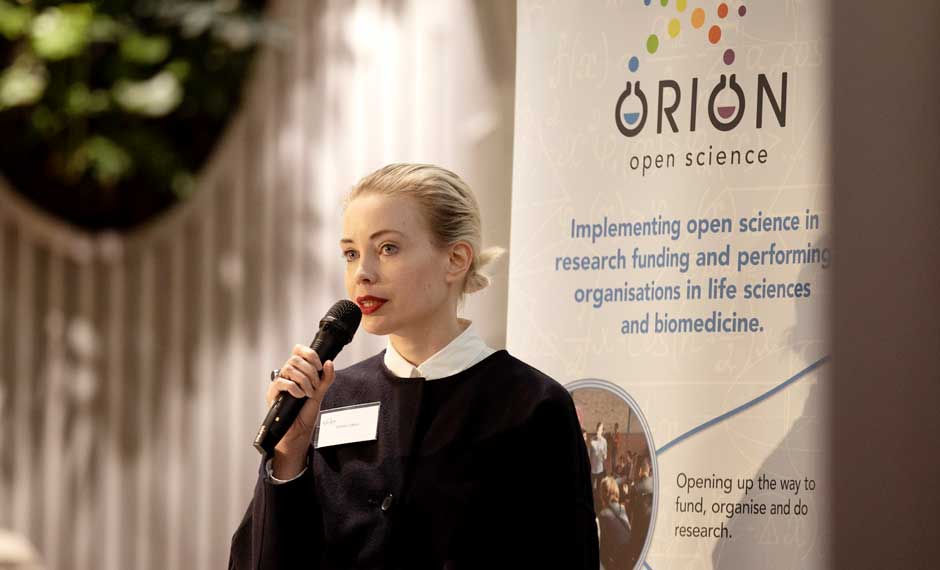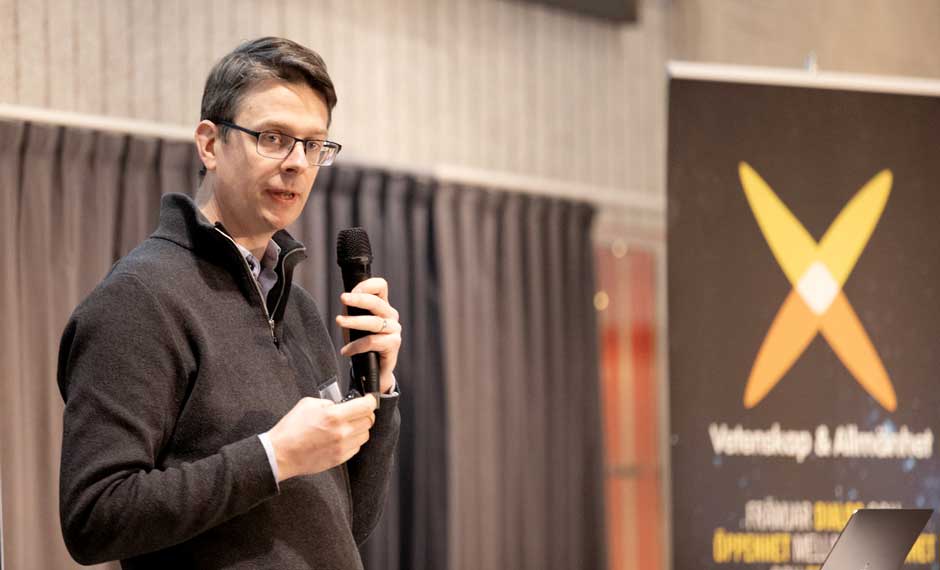If there was a medicine that could stop physical ageing – would you take it? Artist Emilia Tikka’s installation, which is currently showcased at the Swedish National Museum of Science and Technology in Stockholm, uses this idea to stage a vision of the future. The artwork is the result of her collaboration with researchers in the field of genome editing. The exhibition was opened with a seminar on 23 January 2020.

“I want to arouse people’s interest by displaying a potential future scenario, based on new techniques for genetic engineering. My work is speculative and philosophical, but is always based on science,” Emilia Tikka said at the seminar.
She is a Finnish artist, resident in Berlin and a doctoral student at Aalto University in Helsinki. Thanks to ORION Open Science, she received the opportunity to spend three months at the Max Delbrück Center for Molecular Medicine in Berlin. During her stay, she talked to researchers, experimented with human tissue and examined how the CRISPR genome editing technology could be used to stop ageing.

The result was the "ÆON – Trajectories of Longevity and CRISPR" installation, now on display at the National Museum of Science and Technology in Stockholm. In a series of photographs, she and photographer Zuzanna Kaluzna present portraits of a pair of lovers, where the man has chosen to take a medicine that keeps him physically young, while the woman ages normally. In a picture in which they are standing close together, the man is wearing a mask.
“Perhaps you’re more scared of dying if you risk losing eternity, rather than perhaps ten years,” said Emilia Tikka.
The idea for this future scenario involving regenerative medicine arose when she discovered that it is possible to use genome editing to make individual cells live longer and to repair damaged cells. The CRISPR technology makes it possible to very precisely “cut” away a tiny piece of a gene, for example to remove a particular hereditary disease, and to “paste” in a desired characteristic.
“CRISPR is not used to try to achieve eternal life, but to cure or relieve the effects of genetic diseases, such as some types of cancer,” explained Fredrik Lanner, a researcher at Karolinska Institutet.

He believes that the risks of genome editing tend to be overstated, even if it is, of course, impossible to know for sure what removing out can entail.
“I’m a bit surprised that there isn’t more discussion about CRISPR and other medical breakthroughs, as well as the consequences they can have for society,” said Fredrik Lanner.
Getting people to think about the human implications of new technology and scientific progress is what Emilia Tikka aims to do.
“That’s why I work with speculative design.This is design that makes you buy things without thinking, that doesn’t solve problems but asks questions instead, and which is not for consumers but is rather for citizens,” explained Emilia Tikka.
Peter Skogh, Director of the National Museum of Science and Technology, believes that the meeting of art and science gives us reason to think about ethical and existential questions.
“Emilia Tikka puts a finger on perhaps the most sensitive spot – that concerning life and death.”
The exhibition is currently on display at the National Museum of Science and Technology in Stockholm in collaboration with Vetenskap & Allmänhet until the end of February. Emilia's artist in residency and the artwork have been funded by the ORION Open Science project, the Max Delbrück Center for Molecular Medicine in collaboration with STATE Studio in Berlin. The artwork is also a part of the Public dialogues on genome editing run by the ORION project.